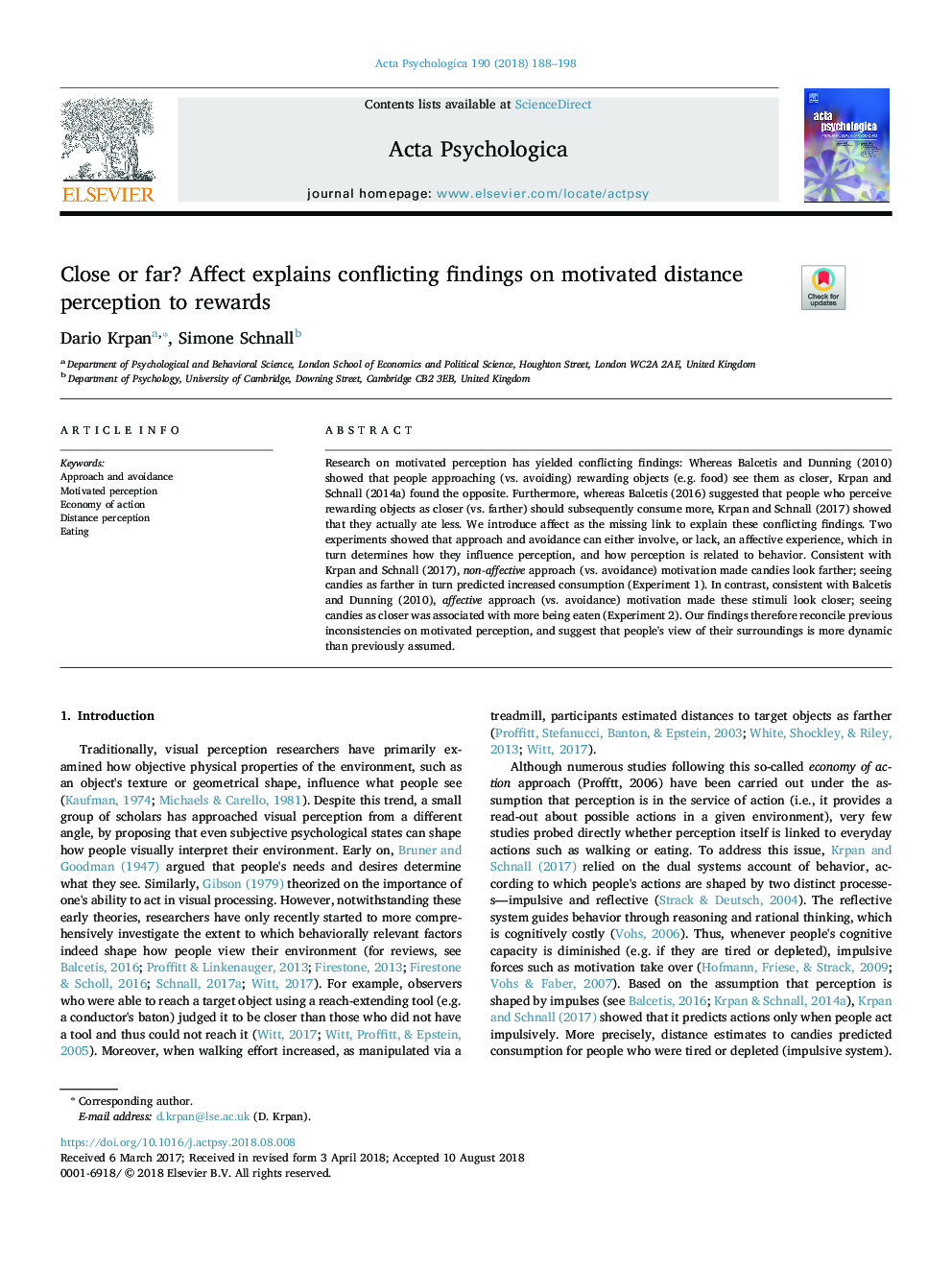| Article ID | Journal | Published Year | Pages | File Type |
|---|---|---|---|---|
| 7276538 | Acta Psychologica | 2018 | 11 Pages |
Abstract
Research on motivated perception has yielded conflicting findings: Whereas Balcetis and Dunning (2010) showed that people approaching (vs. avoiding) rewarding objects (e.g. food) see them as closer, Krpan and Schnall (2014a) found the opposite. Furthermore, whereas Balcetis (2016) suggested that people who perceive rewarding objects as closer (vs. farther) should subsequently consume more, Krpan and Schnall (2017) showed that they actually ate less. We introduce affect as the missing link to explain these conflicting findings. Two experiments showed that approach and avoidance can either involve, or lack, an affective experience, which in turn determines how they influence perception, and how perception is related to behavior. Consistent with Krpan and Schnall (2017), non-affective approach (vs. avoidance) motivation made candies look farther; seeing candies as farther in turn predicted increased consumption (Experiment 1). In contrast, consistent with Balcetis and Dunning (2010), affective approach (vs. avoidance) motivation made these stimuli look closer; seeing candies as closer was associated with more being eaten (Experiment 2). Our findings therefore reconcile previous inconsistencies on motivated perception, and suggest that people's view of their surroundings is more dynamic than previously assumed.
Keywords
Related Topics
Life Sciences
Neuroscience
Cognitive Neuroscience
Authors
Dario Krpan, Simone Schnall,
